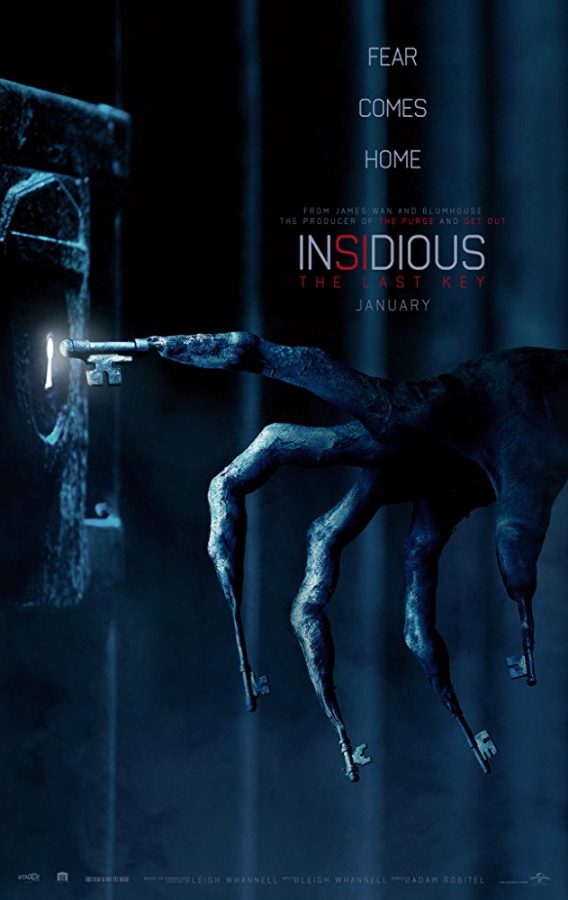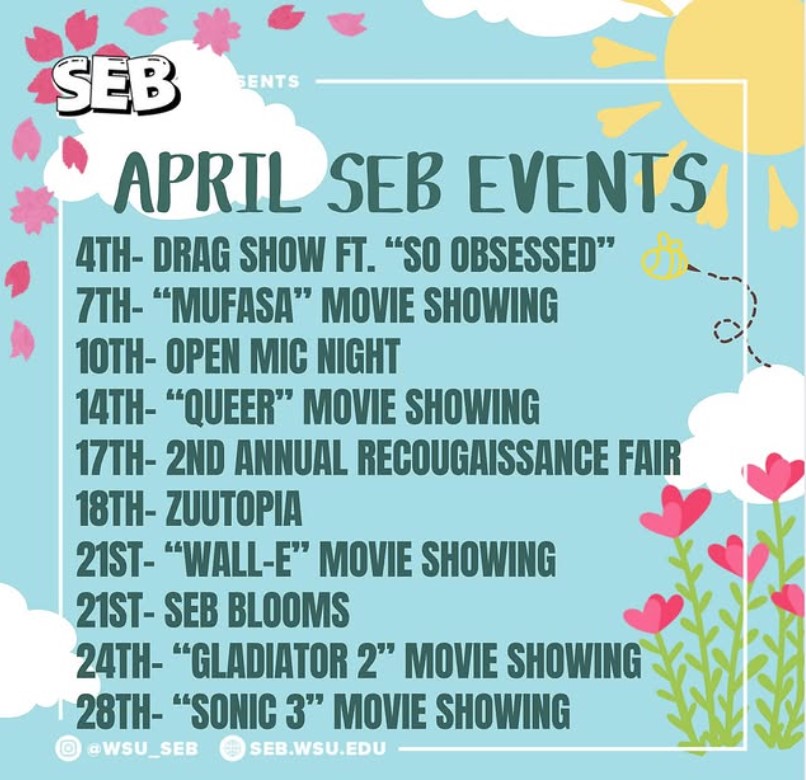‘Insidious: The Last Key’ unlocks childhood trauma
Protagonist returns to her childhood home to face past
March 29, 2018
Sequels in horror movies are as common as jump scares. However, a fourth movie in one franchise is impressive, and that is exactly what “Insidious: The Last Key” is. And it holds a twist: it is — wait for it — a prequel. While this is no surprise in today’s movie age, it was an odd choice for the “Insidious” franchise.
“The Last Key” stars Lin Shaye, who has been in every “Insidious” movie as Elise Rainier. Rainer is a paranormal ghost hunter who has helped the protagonists of previous “Insidious” installments. In “The Last Key,” we get a look back at Rainier’s childhood and how she got involved with the paranormal.
We meet Rainier as a child in an abusive home, as she is starting to see apparitions. Because of her first interaction with the ghost, her father (Josh Stewart) beats her and locks her in the basement. This is when Rainier meets the antagonist, a ghost named Key Face. The ghost possesses her, causing her to do the unthinkable before leaving her body.
The story then shifts to present day, where Rainier is now a woman and in full ghost hunter mode. She is having great success until she gets a call from someone living in her old home who is seeing ghosts. She is then forced to go back home and face her old demons, literally.
The rest of the movie is convoluted, with old horror tropes that are no longer necessary in modern cinema: predictable jump scares, flickering lights and creaking noises, just to name a few.
It does, however, have some very dark imagery. In many paranormal story arcs, fear is driven by the unseen. In “The Last Key,” what you do see will give you nightmares.
After watching the film, I realized that there might be more to the story.
WSU associate professor Kirk McAuley is an expert of American horror, who teaches “Gothic Literature: The Politics of Horror.” While he specializes in 18th-century and transatlantic studies, McAuley shed some light on traditional American horror narratives.
Although McAuley has not seen “Insidious: The Last Key,” he provided many concepts that helped me better understand the film.
“Supernatural in gothic fiction is usually used as a substitute or metaphor for a major social political problem,” he explained.
We discussed the abuse Rainier faced when she was younger, and he explained that trauma can act as a crutch for the protagonist.
“Insidious: The Last Key” hides the themes of domestic abuse and PTSD through Key Face. The ghost is the one who first disturbed Rainier and comes back to haunt her many years later.
McAuley helped me make the connection that Key Face’s name plays a literal role in the narrative. Defeating the antagonist is the key to releasing Rainier from her haunted pass and allowing her to move on with her life.
While this film has deeper societal themes, it is by no means perfect. The script and dialogue are sadly underwhelming. While jumping between the past and the present, the script and plot seem to collide in a conjoined mess.
My biggest complaint about the film is the forced humor. Too many scenes in this movie have far-fetched jokes and unnecessary commentary that completely distract from the central story line.
“Insidious: The Last Key” shows at 6 p.m. and 9 p.m. Friday and Saturday, and 4 p.m. and 7 p.m. Sunday in the CUB Auditorium.
I would recommend watching this film if you are a die-hard “Insidious” fan, or a horror buff like me. At the very least, it beats studying.










